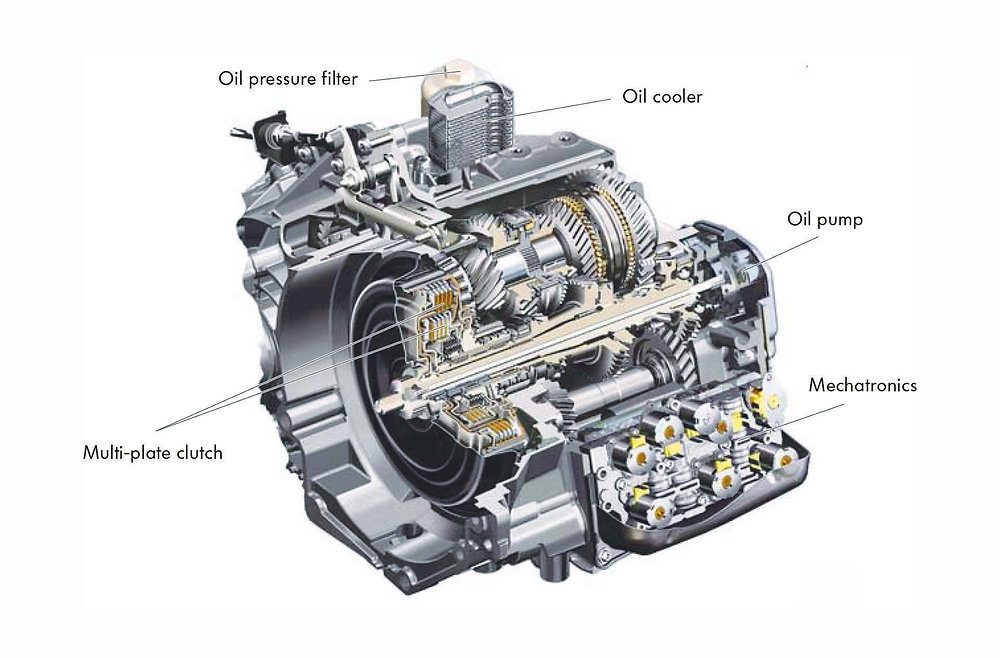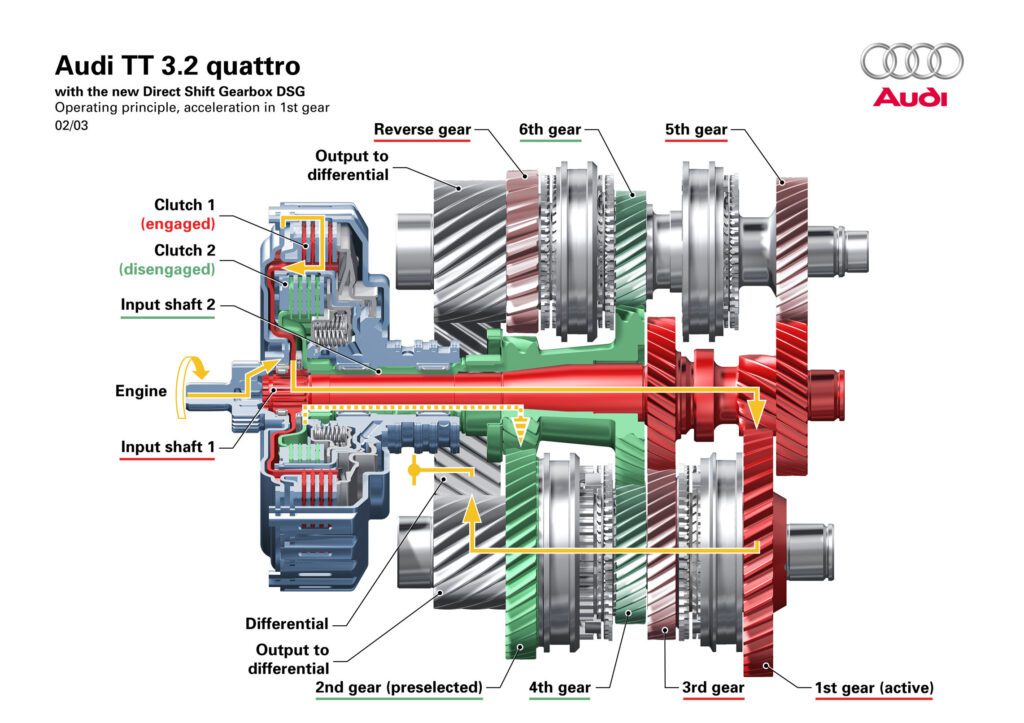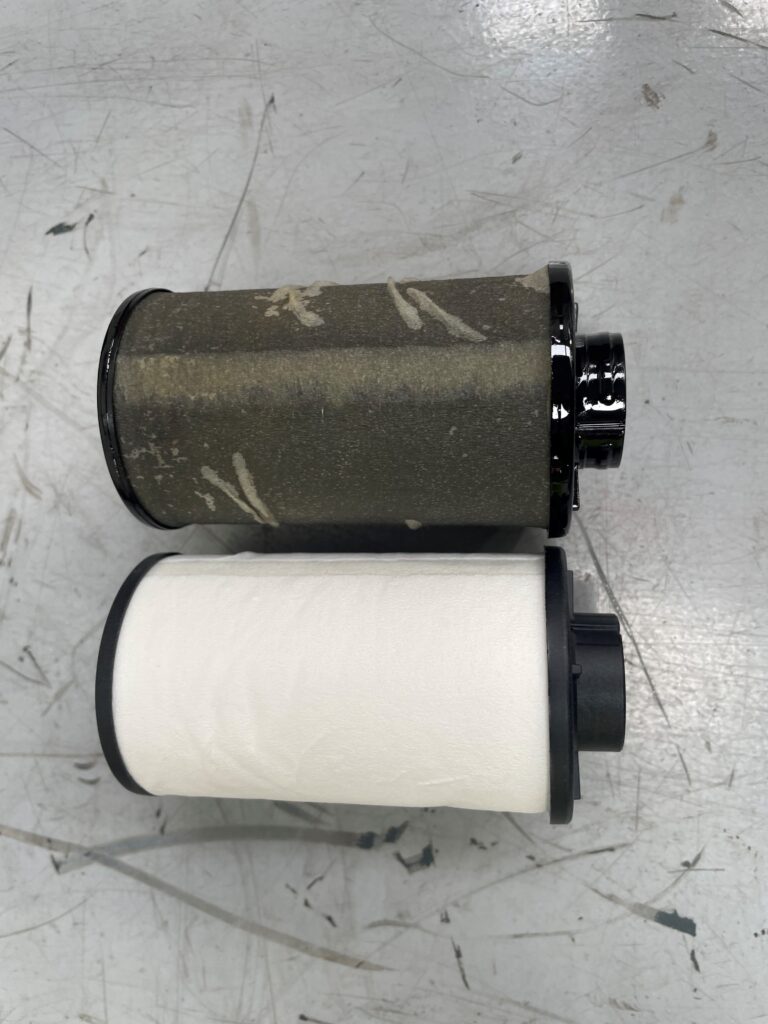DSG and Haldex: The Basics
DSG and Haldex: Quick Intro and Servicing Requirements
Part of what makes many VWs so enjoyable to drive is the modern driveline technology they feature. Volkswagen pioneered the DSG (Direct Shift Gearbox) in 2004, and since then, many other manufacturers have followed suit. On most 4Motion (all-wheel-drive) models, this is complemented by a Haldex-controlled rear differential—a robust and simple design that allows the grip and stability of AWD with the efficiency of 2WD through use of an electronically controlled wet clutch pack (Haldex coupling).
To keep these systems running smoothly, it’s essential to follow the correct service intervals and use high-quality oils and filters. In this post, we’ll explore how both the DSG and Haldex systems work and the best practices for maintaining them.
What is a DSG Transmission?

Cutaway view of the inner workings of a DQ250 DSG transmission
The DSG, or Direct Shift Gearbox, is basically two conventional manual gear boxes combined in one casing, along with a robot (mechatronics unit) to shift gears and operate the clutches automatically. The two clutches each operate a different gear stack: one for odd-numbered gears and the other for even-numbered gears. This setup allows the next gear to be automatically pre-selected while driving, resulting in lightning-fast gear changes. For this reason, DSGs are generally the preferred option for sports models, and they make great transmissions for racecars too.

Schematic of power delivery through DQ250 transmission
Unlike traditional automatics, which rely on a torque converter to transfer the engines power to the wheels, the DSG provides a direct connection between the engine and wheels. This improves fuel efficiency and delivers a better driving experience.
The most common DSG transmission on the road is the DQ250, widely used in VW and Audi 2.0L petrol and diesel passenger cars between 2005 and 2017. It powers popular models like the Golf GTI and Golf R and is available in both FWD and AWD configurations. For vehicles requiring higher torque, the DQ500—a 7-speed AWD transmission—can be found in models like the RS3, T5 Transporter and some diesel Tiguan models. More recently, the DQ381 has replaced the DQ250 in many applications, including newer Golf and Tiguan models. Even the Audi R8 and Lamborghini Huracan run DSG transmissions!
How the Haldex System Works

The internal components of the Haldex unit (Gen 5 pictured)
The Haldex coupling uses an electronically controlled multi-plate clutch to distribute power between the front and rear wheels as needed. Unlike traditional AWD systems, which operate full-time, the Haldex clutch remains open under normal operating conditions and engages the rear wheels only when additional traction is required, such as starting from a standstill or during aggressive cornering.
This on-demand functionality provides excellent grip and stability in slippery conditions without compromising fuel efficiency. The system is compact and lightweight, making it ideal for modern vehicles.
The Haldex system offers several advantages, including:
- Improved traction on snow, ice, or wet roads.
- Enhanced stability during cornering or high-speed driving.
- Better fuel economy compared to full-time AWD systems.
If you have an AWD VW or small Audi model, chances are pretty good it will be a Haldex unit controlling the rear differential. (This excludes the Touareg and Amarok).
Why Servicing Matters
Regular servicing is essential for keeping the DSG transmission and Haldex coupling running efficiently. As part of normal operation, particles from the clutch plates wear off and make their way through the oil to the oil filter. Over time these build up and reduce the flow through the filter. The oil also becomes less effective with the heat cycles its exposed to. You can read more about oil degradation in our post on standard servicing here. The oil in these units serves both as a lubricant and a coolant, preventing overheating and reducing wear on internal components. Failing to change oil at the recommended intervals can lead to costly repairs.

Old vs new DSG filters. The darkness of the old filter is mainly caused by clutch fibres taken out of the oil
DIY vs. Professional Maintenance
While servicing is relatively straightforward and possible to be done at home, it’s often best to leave this task to professionals. Servicing requires specific tools and expertise to ensure the systems are properly maintained. If you are going to attempt this yourself, please first familiarise yourself with the correct processes first.
For correctly filling the DSG oil – this must be done with the oil between 35-45 degrees and with the level bung installed. Having the transmission overfilled or underfilled can result in poor operation and ejection of excess oil out through the transmission breather valve. It is also possible to fit the DSG oil filter upside down which will result in an undrivable car and likely crack the housing too (we have seen this happen a few too many times!).
When servicing the Haldex, it is important to know what generation it is. Most older models will run a Gen 4 unit which has a replaceable filter. These can be very difficult to remove and can require the use of a test plan on a scan tool to use the pressure from the pump to free the filter. Newer models (ie MK7 Golf) use a Gen 5 Haldex, which does not have a replacement filter so requires the pump motor to be removed so the gauze filters can be cleaned out.

The SP MK7R makes use of both a DSG transmission and Haldex coupling to make it lightning fast and well controlled on both the track and street circuits
Recommended Service Intervals – DSG and Haldex
For an average road car, Volkswagen recommends servicing the DSG transmission and Haldex unit every 60,000kms, although this may need to be reducing depending on how the car is used. Have a chat to us about what modifications have been made to your car and how it is used if you’d like advice on this.
Conclusion
The DSG transmission and Haldex AWD system are key contributors to what makes driving a Volkswagen so enjoyable. However, these advanced technologies require proper care to stay in top condition. Regular servicing and using high-quality oils and filters, is essential to avoid costly repairs and maintain performance.
If your VW is due for a DSG or Haldex service, or you are not sure if it needs doing, don’t hesitate to get in touch with us. At Sutherland Performance we specialize in VW and Audi so have the experience to maintain and repair these systems to keep your car running smoothly. Contact us today to book an appointment or for advice.
From your favorite VW/Audi Mechanic,
Sutherland Performance
https://my.workshopsoftware.com.au/bookings.html#/SutherlandPerformanceLtd?token=ds6900
04 381 9101
enquiries@sutherlandperformance.co.nz



Hi there. I have a 2009 Passat r36 that needs a DSG service. Could you please give me a rough estimate on how much it would be? Thanks 🙂
Hi Joshua, you’re looking at $520 incl GST for your R36.